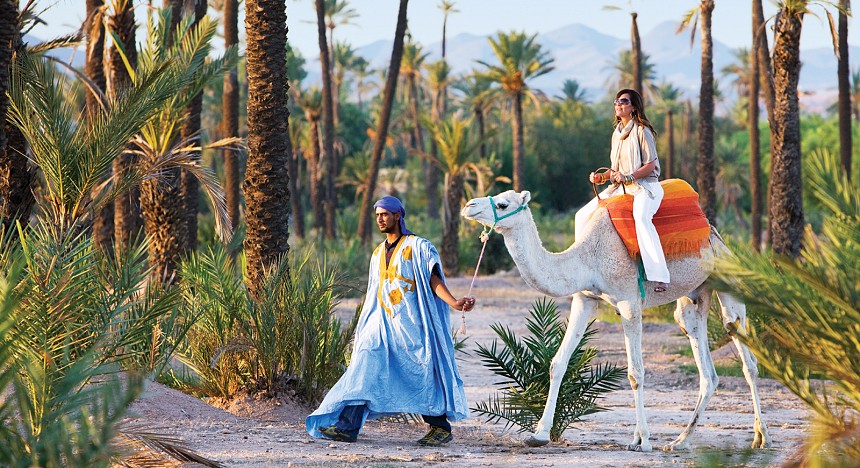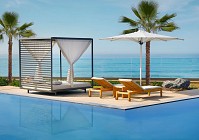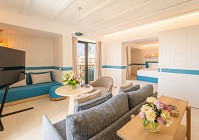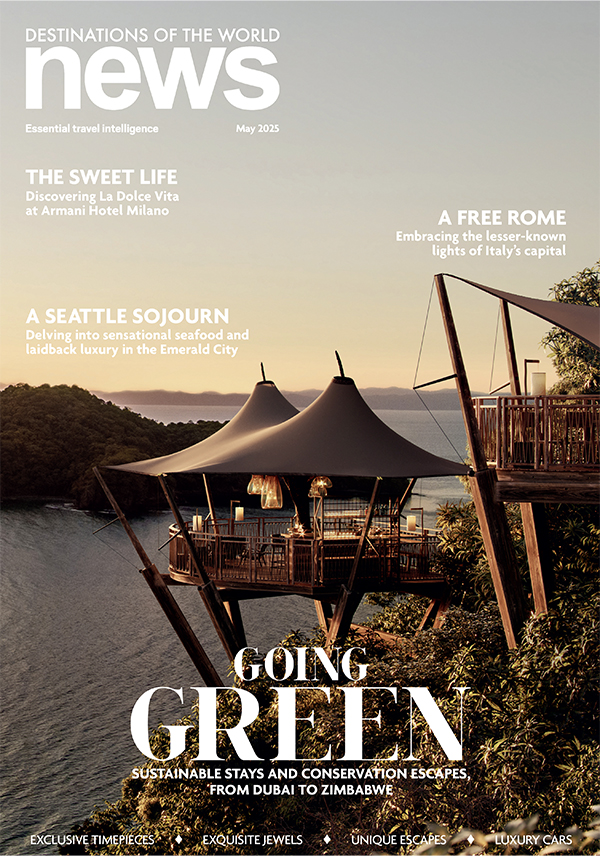Sipping a vin gris on the al fresco terrace of an elegant French restaurant with the cries of seagulls and the North Atlantic surf crashing below, it’s difficult to place where I am in the world. Stylishly attired diners in designer eyewear bask in the afternoon sunlight – French, Arabic and English languages mingle in the air. But as soon as the waiter brings a silver teapot to the table, pouring sugared mint tea from a great height into petite glasses, it’s unmistakable: I’m in Morocco.
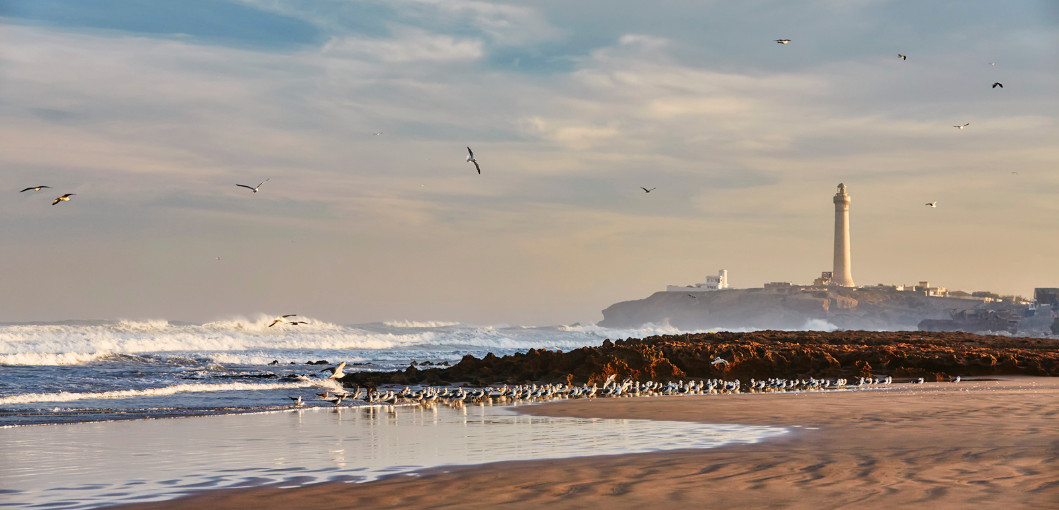
Worlds away from the exotic allure of the ancient medina of Marrakech, I’m quickly learning that Casablanca – Morocco’s economic, Atlantic port city – is far more cosmopolitan and contemporary than I anticipated, though the city’s thoroughly modern face seems to have worked against it. Perhaps disappointed to learn the eponymous, 1940s cinematic love story starring Bogart and Bergman was shot entirely in the less-glamorous location of Burbank, California, most travellers exit the airport and barely stay a day, using it as a launching pad to the oasis city of Marrakech or beyond. It’s an oversight that most Casablancans simply shrug their shoulders at. While it’s true that Casablanca, known affectionately as “Casa”, might not have the charisma of St. Tropez, it has a distinctly chic French imprint, evident in the language, the food and restaurants like Le Cabestan (90 Blvd. de la Corniche, Phare d’El Hank, Corniche Ain Diab; +212 5223 91190). And it’s only getting chicer. A US$730 million overhaul of the old port will be finished by 2020, bringing with it a gleaming new marina and inevitably, a seasonal influx of Med-bound yachts. And now they have somewhere to stay.
Despite its many kilometres of beachfront, Casablanca didn’t have a single hotel on the sands, but this has all changed since the Four Seasons Hotel Casablanca flung open its doors last year. Situated in the Norman Foster-designed Anfa Place, this millionaire’s-row position faces the golden sands of the beach where in the late afternoons, Casablancans converge to walk, horse-ride and surf. With its striking façade and contemporary artworks, the intimately sized resort-inspired hotel has 186 guest rooms, including 29 suites. My generously proportioned junior suite has ocean-facing views and a colossal bathroom – a Four Seasons signature. And while the hotel might have a business leaning, the only suits needed to lounge in the cabanas at the outdoor Miami-style pool are of the bathing kind. There’s also Le Spa, where I disappear one afternoon for a 90-minute signature massage and to indulge in a classic Moroccan pastime: relaxing in a steamy hammam.
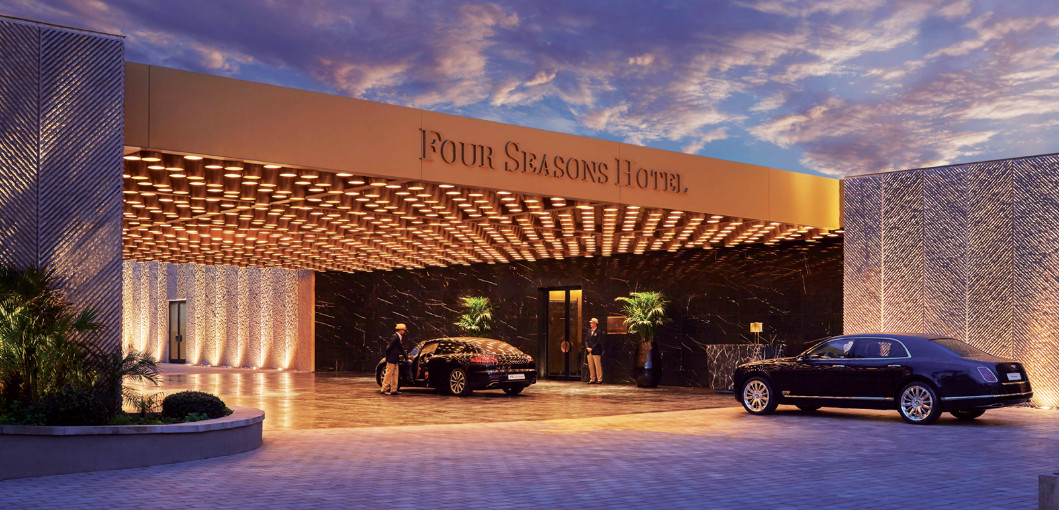
Upstairs, the ground-level lobby buzzes with intimate lounges and a balcony with a firepit that begs for late-night conversation over digestifs. And while Morocco might be better known for rich tagines, briouats and pastillas stuffed with all manner of meat, with both Mediterranean and Atlantic coastlines, the seafood – from juicy prawns to the giant Dahkla oysters – is outstanding, particularly when scoffed down with hand-cut truffle chips at Bleu, the hotel’s ocean-facing seafood restaurant. The hotel opening was perhaps one of the most obvious indications that Casablanca is in the midst of a contemporary evolution, and it seems to be occurring in harmony with Morocco’s Sunni Maliki branch of Islam, one of the most tolerant and liberal in the world. Despite Casa’s sophisticated new malls – including one that’s the largest in North Africa – there is no mistaking (nor missing) the city’s greatest tribute to religion, the grand Hassan II Mosque (Blvd. Sidi Mohammed ben Abdallah). With the highest minaret in the world, the prominent mosque stands sentinel on the coastline, built over the waters of the Atlantic to pay tribute to the verse of the Qur’an that states “the throne of God was built on the water”.
Setting off to explore the colossal mosque early one morning, I’m delighted to find we are the sole visitors on a private guided tour. It took just six years to build the mosque, which can accommodate 25,000 people – though the effort was significant, employing more than 10,000 craftsmen and 78 architects to create what is unequivocally, a feat of architecture. Astonishingly, the marble floor is heated during cold seasons, while the enormous ceiling has a retractable roof, which by a stroke of luck is partially open during our tour, allowing sunlight to stream inside. With eight escalators and a minaret with laser beams pointing to Mecca, the mosque was also funded in part by the people. “Some gave one euro or 10 euros, some 50, and they collected 600 million dollars,” explains our guide, as he points out intricate tile-work and plasterwork hand-chiselled by artisans.
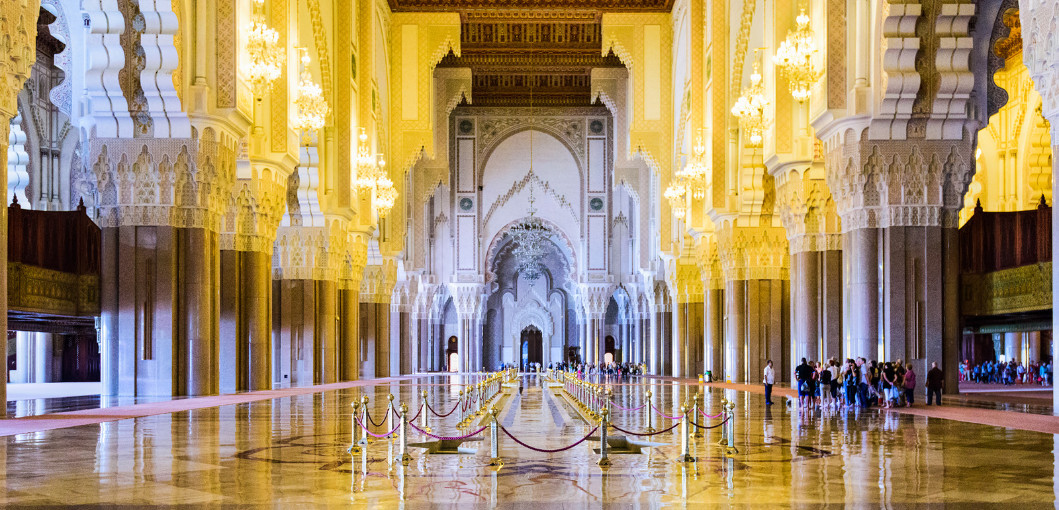
Such painstaking attention to detail and heritage is also apparent in the stunning creations of the country’s leading fashion designer, kaftan-couturier Zhor Raïs. The daughter of a tailor, Raïs rose to fame with her splendidly vivid kaftan designs, and her atelier, set inside a villa in an upscale, palm-lined Casablanca neighbourhood, is where clients come for private consultations. Raïs and her willowy daughter Chadia (who is also a fashion designer) lead us around the atelier, explaining the craftwork behind the richly coloured, beaded kaftans. No two are the same, and Raïs also eschews publicity, stoically preferring not to name her clients, though it’s safe to assume that her glorious kaftans are worn by Moroccan royalty. She often receives orders for entire Ramadan wardrobes from women across the Middle East.
Aside from haute couture, Morocco’s traditional mode of shopping is alive and well in the Quartier Habous neighbourhood. The atmosphere of Casblanca’s souk may be no match for the heady exoticism of the Marrakech medina, but the prices certainly are; they can be cheaper than Marrakech, from silverware and leather goods to bottles of traditional Moroccan argan oil. In-between exploring the tiny laneways, we duck into Pâtisserie Bennis Habous (Rue Fkih El Gabbas; +212 5223 0302). Founded in 1938 and owned by a Casablancan family, the recipes for the delicate almond pastries have been passed on from generation to generation. The cult favourite are hornes des gazelles (gazelle horns), almond-stuffed, crescent-shaped pastries scented with orange-flower water and cinnamon.
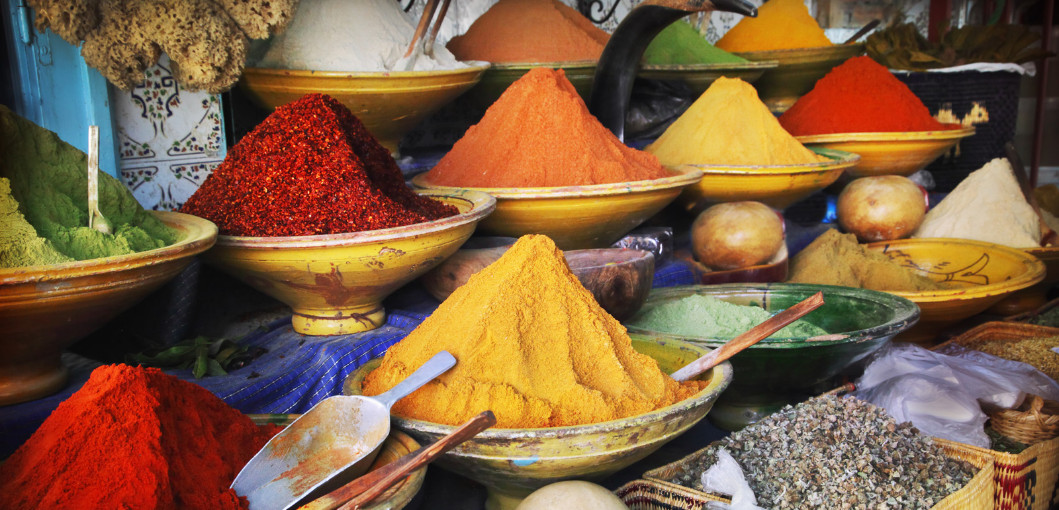
Pastries make the ideal snack for the three-hour drive to Marrakech the following morning. I’m reluctant to leave Casablanca, but the allure of the ancient medina is impossible to resist, and Four Seasons’ sister property, Four Seasons Hotel Marrakech – with 17 hectares of lush, landscaped gardens, heated adult and family pools, and Le Spa where natural herbs and aromatherapy are the signature touch – turns out to be the ideal base for relaxation before or after a souk-shopping blitz. The design is largely contemporary Moroccan with antique pieces scattered in the public spaces, but what I grow to love most about the resort – and Marrakech as a whole – is the low-lying architecture. It’s forbidden to construct any building higher than the Koutoubia mosque, a landmark in the city, which means that snow-capped Atlas mountains and palm-grove views are guaranteed from most rooftops. Along with palm-laden luxury resorts and kasbahs on the edges of the walled city, there are thousands of riads – historic 16th- to 19th-century town houses, many stylishly converted into boutique chambre d’hôtes – along with veritable palaces like Royal Mansour.
Set on a three-and-a-half-hectare estate, it’s a palatial oasis of winding passageways, burbling fountains and orange-scented citrus gardens. Built by the country’s finest maalem (master craftsmen), the hotel is a masterpiece of Moorish-Andalusian design, the symmetrical, geometric tiles, intricate plasterwork and floral motifs catching the breath. Once I set eyes on the magnificent lobby, I immediately understand why it’s so popular for fashion-editorial shoots. The hotel’s 53 riads, fitted with heavy wooden doors and tranquil courtyards, are exquisitely designed and staffed by butlers who mysteriously appear and disappear through underground tunnels when required, to serve breakfast on the rooftop beside the pool, leave a platter of fresh mandarins in the sitting room, or to light the fireplace in the evening. My one-bedroom riad comes with bespoke stationary bearing my gold-embossed name and even an elevator – should the stairs become too tiresome.
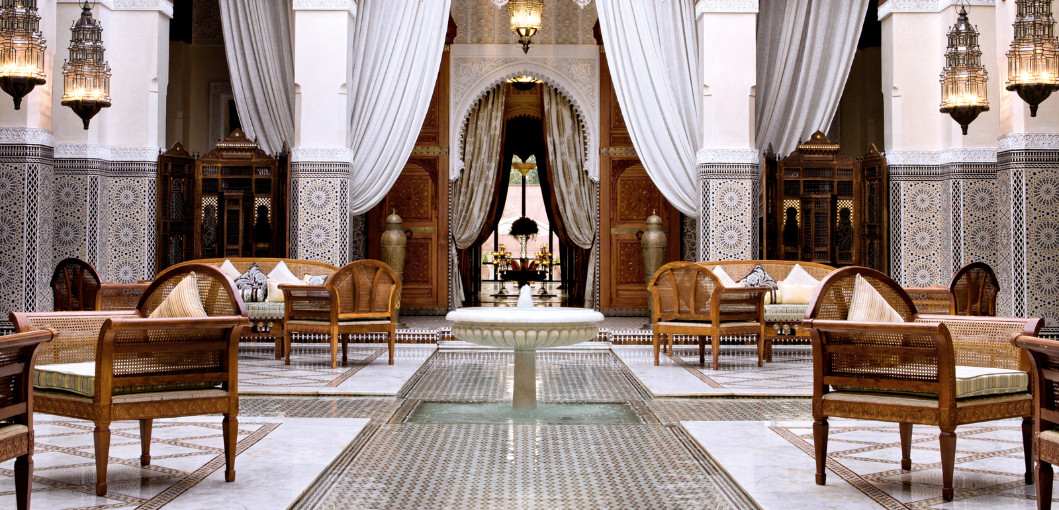
While dining out is the norm in Marrakech, dining in at Royal Mansour’s signature restaurants, Le Grande Table Maroccaine turns out to be unforgettable. The experience begins with waiters sprinkling orange-blossom water on my hands, and as the haunting twangs of an oud musician fill the air, I dine on signature dishes overseen by Michelin-starred chef Yannick Alléno, who remasters Moroccan classics like beef tagine, which arrives imbued with an ambrosial medley of prunes, nuts and spices served in a conical earthenware dish. I swoon over the pigeon pastilla, which the waiter carves in two at the table, the cracking of sweet filo pastry resonating in the air, and finish grateful I didn’t decline the dessert: feather light, gelatinous orange-blossom spheres. The following afternoon, I head to the spa – designed beneath a stunning white wrought-iron atrium designed to emulate a birdcage – for a hammam, where in steamy marble-clad rooms, a therapist scrubs my body not with Maghrebi black soap, but with ultra-luxurious marocMaroc spa products. Post-treatment, I lounge upstairs on a daybed shielded by mashrabiya (wooden-lattice screens) with a mint tea, feeling like royalty.
I have a genuine brush with royalty the following morning exploring the medina. Ducking past donkey-drawn carts and through the dusty-pink city walls, I walk through twisting souk passageways into one of the medina’s most famous antique merchants – just as the Duchess of Cornwall, Camilla Parker-Bowles, strides past with a small entourage. The Duchess is a repeat customer, Hakim Lebbar, the owner of La Porte d’Or (Souk Semmarine; +212 524 445 454) tells me. The gregarious owner of this treasure-chest of wonders is used to dealing with visiting royals, celebrities and fashion designers. With ancient carpets stacked high, it’s impossible not to fall in love with an eight-generation-old Beni Ourain rug, weaved by Berber villagers in the Atlas mountains. It ends up being just one of my many purchases on a truly bewitching shopping experience where time and money seem to slip away all too quickly.
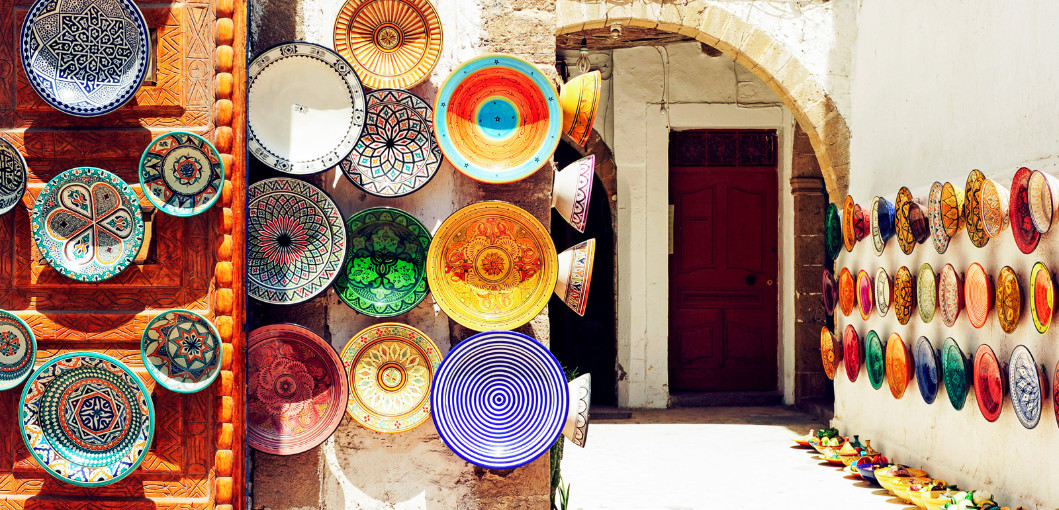
From oils and potions, technicolour spices piled high and Berber tribal jewellery to traditional babouches (slippers), sequin-laden wedding blankets and leather sandals hammered into shape by alley-side cobblers, I’m spellbound by the textiles, and amused by the sales pitches from the canny yet friendly merchants. One launches proceedings with a convincing: “Sister, I will give you a democratic price”; another gestures to a wall of leather babouches, urging me to buy “Moroccan Adidas”. In-between purchases, I make like the Marrakechis and take to sun-drenched cafés to watch the passing parade with a mint tea; escape the midday heat with lunch in the cooling courtyard of a riad, or clamber up to a rooftop to glimpse the peaks of the Atlas mountains in the distance as the call to prayer echoes across the UNESCO heritage city.
With interior-design elements influenced by the 1950s and ‘60s, Nomad (1 Derb Aarjan, Marrakech Medina; +212 524 381 609) is one such rooftop haunt, attracting artsy types and hipsters with slick cuisine and tiered terraces overlooking one of the central marketplace squares. On another evening, I’m warned away from sampling food at the nightly stalls at Jemaa al Fna square, which crackles with life with snake charmers, dancers and the sizzle of cooking meat. Instead, I take another recommendation from a local and book a table at La Fassia (55 Blvd. Zerktouni; +212 524 434 060), solely operated by the Chab sisters, who live up to the reputation that women from Fez are the country’s best cooks. The starter salads – there are more than a dozen served in tiny platters – are a precursor to one of the best meals of my life: a slow-roasted lamb shoulder scattered with almonds, the meat so tender, the waitress simply uses a fork to separate it from the bone.
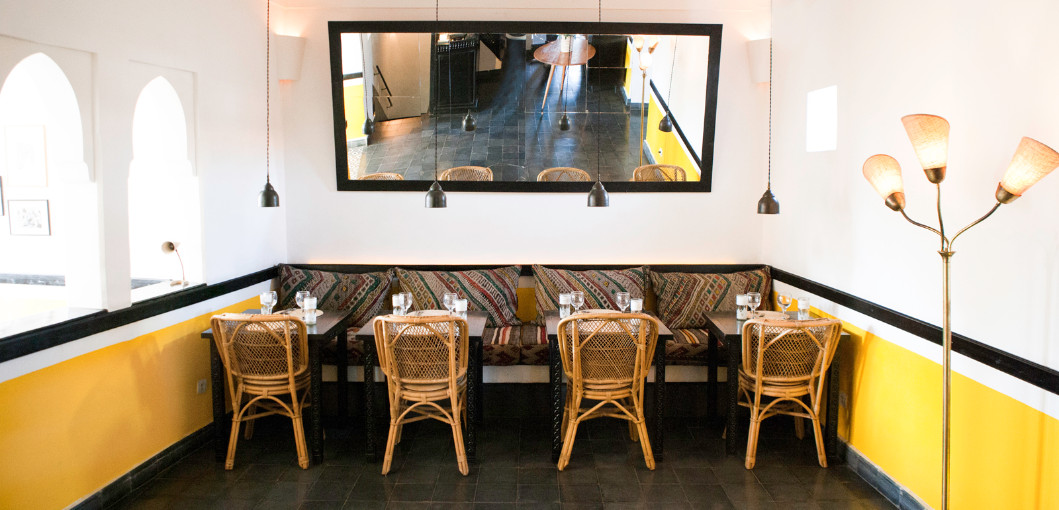
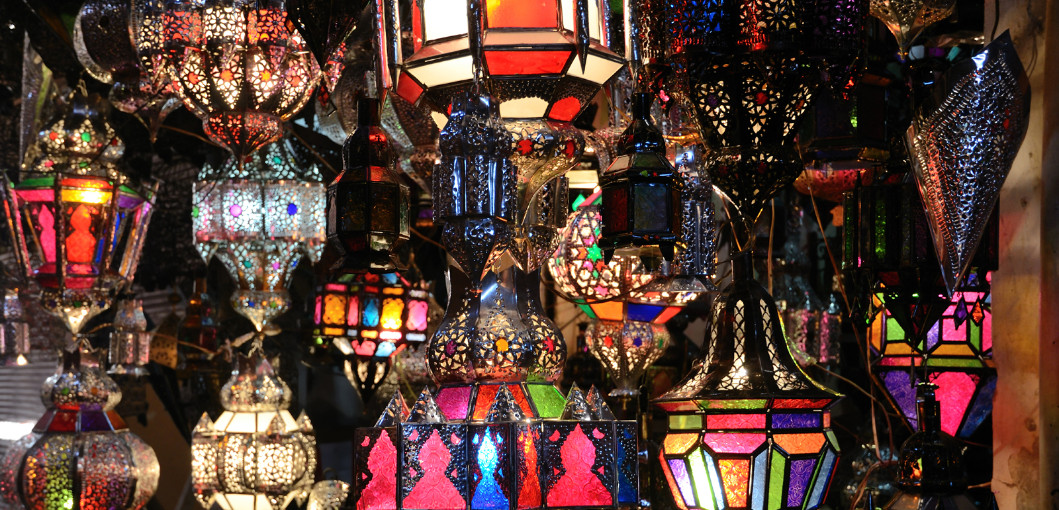
Marrakech is not all shopping and dining, though you could easily spend weeks doing both and barely make a dent (except in your purse). There’s also history-soaked sights like Ben Youssef Medersa, a 14th-century Quranic college that offers repose within its marble courtyard, lined with zellij (mosaic), stucco archways and small chambers where the scholars would reside between prayers. On the final day, I make some time to visit Jardin Majorelle (Rue Yves Saint Laurent; +212 524 313 047). The gardens, filled with towering catci, succulents and the vivid splashes of majorelle blue, are a tribute to the late designer, Yves Saint Laurent, who adored Marrakech, and became known for reinventing some of the more traditional Moroccan fashion pieces such as the jellaba and tarbouch.
As I leave, strolling past the hip boutiques on Rue Yves Saint Laurent, I am struck by something the late designer said: “There are gardens in Marrakech, for which I have a real passion. And the colours that I miss in Paris.” It hits home particularly when I catch sight of a kaftan in a boutique window, peppered with fluorescent-coloured pom-poms. Filled with a sudden temptation to adorn myself in rainbow hues: turmeric yellow, majorelle blue, the salmon shades of ancient medina walls – all the colours of Morocco – I realise I feel exactly the same way.
Stay:
Four Seasons Hotel Casablanca
+212 529 073 700
www.fourseasons.com/casablanca
Four Seasons Hotel Marrakech
+212 524 359 200
Royal Mansour
+212 529 808 080
